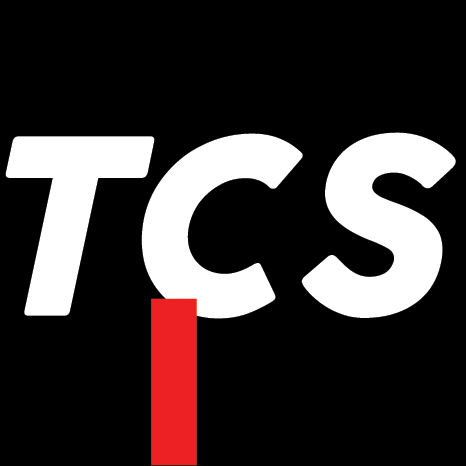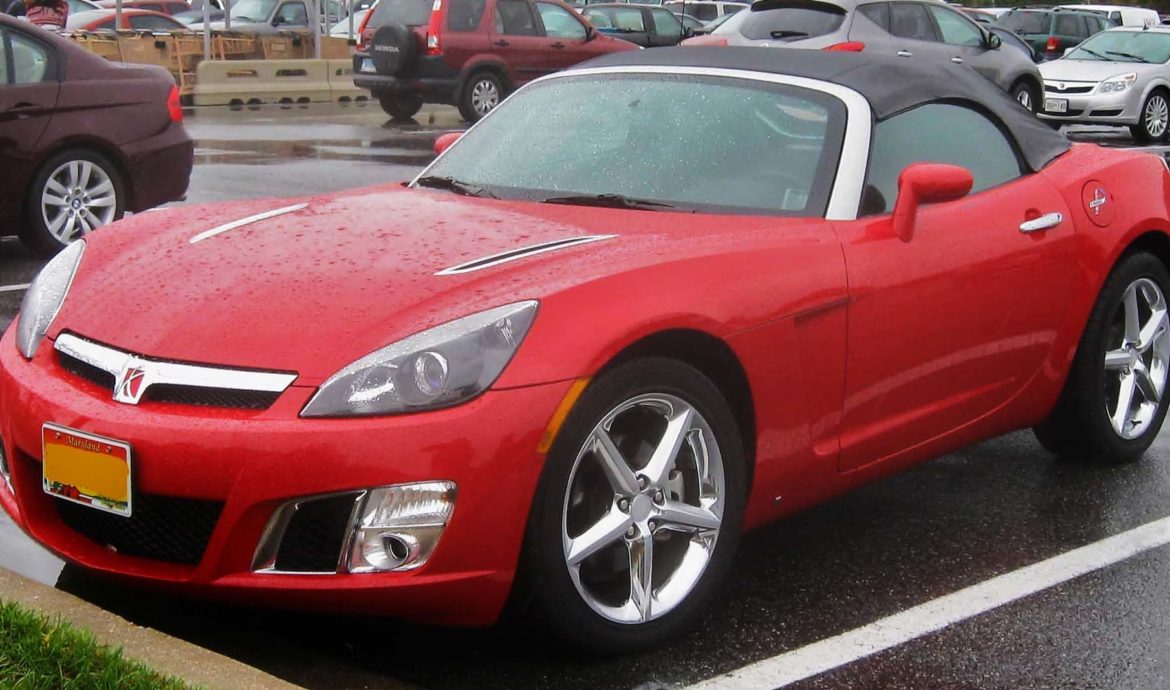Back in high school, I had a 1991 Dodge Ram 150. It was four-wheel drive with a block lift – on all 4 corners. It didn’t have an exhaust system, just a gaping hole where the Y-pipe connected behind the exhaust manifolds, the previous owner cut everything else off. I had two ratchet straps, hooked into my the sides of my box that pulled them inwards towards each other, that I had to tighten every few days. If I didn’t, the rusted out box sides would flop apart causing my tailgate to drop to the ground, not something you wanted to happen if there was a car behind you. Long story short, it was a gigantic, stinking piece of junk, and I loved it dearly, maybe even more than any car I’ve owned since. One day, after school was out, I decided the next logical step would be to attempt to do a burnout to impress some girls, who I’m sure would have been enthralled, had my burnout been successful. It was not. The gods were frowning upon me, the stars did not align, and the adjuster screw holding up against the pad in my ancient drum brake wiggled it’s way loose. It caught on the pinning drum while the other end was still attached to the backing plate, causing my entire rear passenger drum brake to explode, sending shrapnel and brake fluid all over that high school parking lot. That old Ram sat in that parking lot for a week while I tried to scrounge the parts and money to get it fixed up, but I still needed some transportation.
My generous grandfather had a 1999, or maybe it was a 1998, Saturn… car? We actually didn’t know the model name, he bought it off some old guy for like $800, there were multiple expired registration papers in the glove box, all with a VIN matching the car but none of them had a model name and several of them said 1998 while others said it was a 1999. It had over 400 thousand kilometers on it, he had no idea what was original or replaced. The automatic transmission shifted so slowly it would sometimes get caught in a loop. It would attempt to shift from 2nd to 3rd but in the time between shifts it would actually slow down so much that by the time it hit 3rd, the computer would re-evaluate the decision and downshift back into 2nd. Then it would realized that it was speeding up again, attempt to shift into 3rd, and restart the cycle. It had power windows, but only power down. No, old Saturns didn’t have some sort of weird power down and crank up system, if you put the windows down the motors were so worn out and terrible that they didn’t have the strength to push the windows back up. If you forgot and accidentally rolled your window down, you’d need to take trim parts off to try and get enough of a grasp on the window to pull it up a bit and help the motors push. Basically, the only things making it better than my truck at this point was the fact it was semi-safe for road use and I had it on loan for free as long as I needed it. This was back in 2012, my grandfather drove it for another couple years after this happened and he sold it to someone else who is still driving it (I hope they fixed a few things). It was reliable, cheap, great on fuel, and to my knowledge has never left anyone stranded despite feeling like a ticking time bomb. Ever since I spent that week bumming it up in a 1998 or 1999 Saturn compact sedan I’ve had a bit of a soft spot for the brand and have considered it to be a little underrated in the car community.
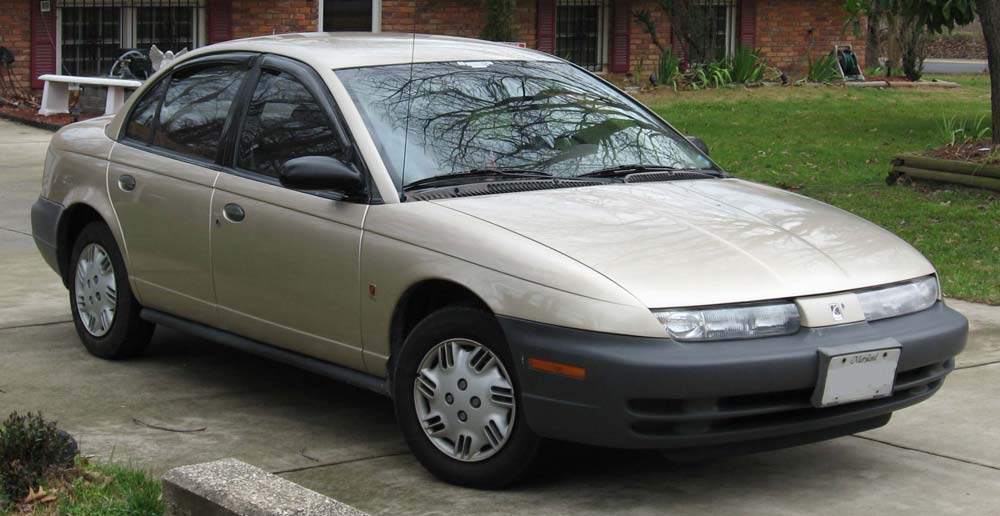
Saturn itself was a short-lived and little-loved brand. The 80s were rough for American car manufacturers, their quality had been plummeting since the mid 70’s (or arguably just never existed in the first place, since at the time we didn’t have much to compare them to) and the Japanese had finally managed to invade mainland America. This time with inexpensive cars that quickly became known for their reliability and fuel economy. For the Americans to compete on the pricing front they needed to cut costs and, unfortunately, quality control got snipped early on. Almost as soon as the Japanese cars became known for being reliable, the Americans developed a reputation for building junk, at least in the compact and midsize car market. GM didn’t seem interested in building quality cars at the time, so how could they compete? By being different, and so they made a different kind of car company.
The Saturn brand was tossed around for close to a decade internally and finally hit showroom floors in 1990. They looked sort of like someone took a bunch of Legos, stuck ’em together, then took a lighter and melted and molded all the pieces to be permanently attached. GM tried to distance the Saturn brand from itself and I can’t tell if it’s because they were ashamed of how the cars looked and didn’t want to be associated with them, or if they were scared that GM’s reputation for building low-quality vehicles would negatively impact Saturn’s image. They set up dealerships that were Saturn specific and structured their marketing in a way that made them stand out. It was risky, but they more or less said: “this is a car, it’s cheaply built but it’s cheap to buy and maintain.” And… it actually worked pretty well. By the mid-90s Saturn was a household name and while they still weren’t known for being reliable or well built, they were cost effective. To be honest I think customers just appreciated the honesty of the Saturn brand. After having to put up with years of fake chrome cladding and sticker packages that peeled off after the first pressure wash, it was a nice change of pace.
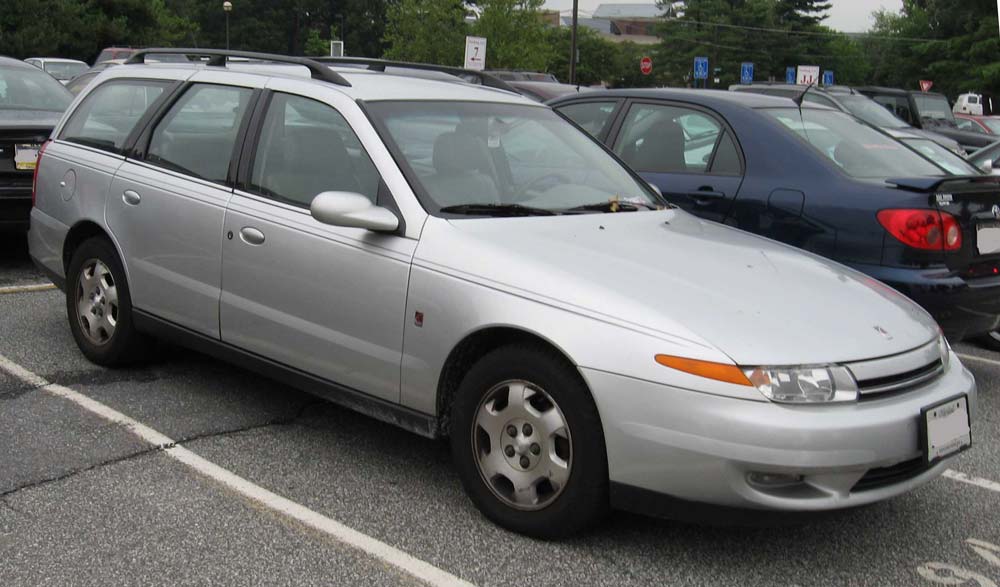
Saturn lived on to see the early 2000s, they were still ugly, still cheap, but they were also still being very clear about being ugly and cheap. They were like the Buckley’s Cough Syrup of cars, it tasted awful, but it worked. They had carved their own niche, they grew into their design in a manner that, while still ugly, was charming in its own way. They even flirted with the more enthusiastic side of things, making edgy coupe things with weird half rear suicide doors like you would find on an extended cab pickup truck. Their narrow rectangular headlights were recognizable even in the dark from a distance. I think it was around 2002 when the whole world had a collective “Whoa, dude, check this out” moment when they realized Saturn’s logo was actually a picture of the namesake planet. Saturn was now a real brand, and like any real brand, they needed a performance sub-brand for 14-year-old boys to hang on their walls and to draw wishful middle-aged men into showrooms where a salesman will convince them they would be better off in a boring midsize sedan.
The early 2000’s were fast and furious. Yes, that was intentional. The F&F franchise had reached terminal velocity, Need for Speed followed suite and suddenly, throwing a big wing and a straight pipe exhaust on the hand-me-down 1997 Civic you got from your mother made you the coolest kid in your community college parking lot. The sport compact market saw a sort of renaissance, with economy cars coming from the factory wearing elaborate body kits and turbochargers crammed under the hoods. You could be just like Paul Walker, only with a warranty!…? Anyway, Saturn wanted a slice of that sweet factory rice cake, and threw a body kit, blower, and some handling bits at their Ion.
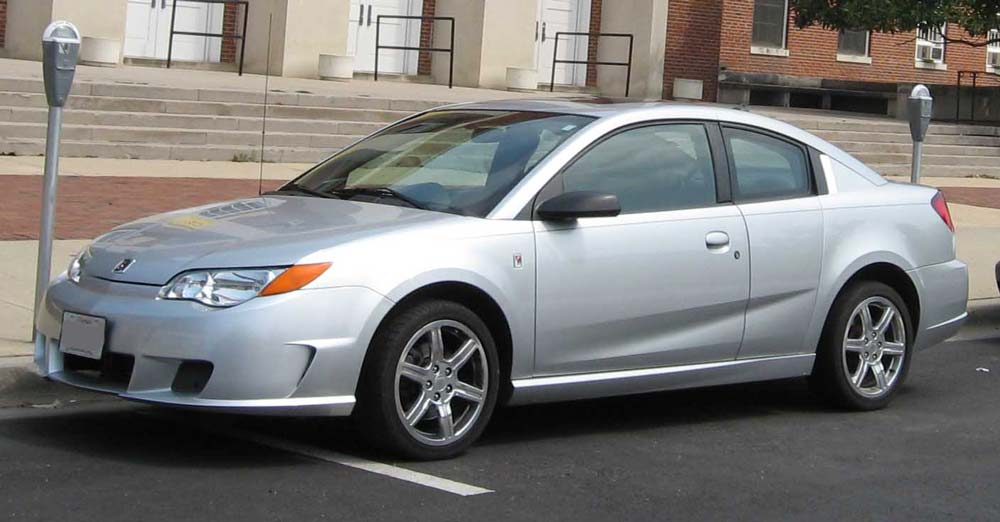
The Saturn Ion Red Line actually preceded the supercharged Cobalt SS, coming out a year earlier in 2004. The already bold style of the Ion was amplified by what was a fairly aggressive looking body kit, and the funky suicide door setup made it, in my opinion, much cooler than the Cobalt SS which used the same engine and most of the same performance bits. The Ion Red Line might be the most under-appreciated sport compact to come out of that era, selling only around 6000 examples over its four years of production, they are actually quite rare. I can’t figure out why it sold so poorly; performance wise it was just as quick, often quicker than the competition, pricing was competitive. I don’t see any serious issues popping up in forums years later, and looking through old reviews I’m not seeing any complaints, at least not ones you didn’t also see from cars it competed with. Car and Driver accused it of being unrefined and void of passion, I’ve never driven one so I can’t attest, but aren’t cheap sporty compacts supposed to feel all rough and uncomfortable? That always seemed like part of the appeal to me, but what do I know. The only thing I can think of detracting from the sales were the polarizing looks, especially when you could get the identical performing Cobalt with more muted styling from the same stable.
GM even offered “Stage Kits” for the Red Line (and SS) to encourage tuning while staying well within the limitations of the platform, and at a decent budget. With injectors, pulley swaps and ECU tunes being handed out like candy, the Ion could see 241hp while still being showroom fresh, an impressive number for the time. The Ion Red Line was discontinued in 2007 and never did get to share the turbocharged motor the Cobalt SS eventually got. Yes, the Ion Red Line was an almost criminally unappreciated car at the time, and now many people have seemed to forget it even existed, but what’s interesting to me is the fact it wasn’t even the most obscure Saturn to wear the Red Line name.
The Vue was Saturn’s compact crossover, something of a Rav4 competitor. Cheap, boring, ugly, classic Saturn formula we all knew and tolerated. For God knows what reason, some engineer in the deepest and darkest bowels of GM’s headquarters managed to break out of their solitary confinement chamber and greenlight the idea for something called a Vue Red Line. Released alongside the Ion Red Line in 2004, this hot Vue featured a similar “factory custom” front fascia, sporty 18 inch alloy rims, a lowered and stiffened suspension, a leather interior, and a handful of other premium options to make it as sporty as a compact crossover from 2004 could be. Where it got weird was the choice of engine. I mean, they could’ve used the same 205hp supercharged 4 pot the Ion and Cobalt used, and GM had an obnoxious amount of different V6 engines sitting around that could have lent themselves well to this sort of application. I like to imagine the conversation going something like:
GM Big Wig 1 – “What do the kids want? What is ‘hip’ and ‘radical’ with the young people?”
GM Big Wig 2 – “I don’t know, they really seem to like all this underground street racing nonsense.”
GMBW1 – “Well what do they like so much about it? What’s popular with the street racers?”
GMBW2 – “My nephew keeps talking about Honda and overnight shipments or something.”
GMBW1 – “Well what are you waiting for?! Get Honda on the line and tell them to send us some engines, and make sure anything they send only travels after dark! It’s what the kids want!”

And thus, the Saturn Vue Red Line was blessed with true JDM power, in the form of a 3.5L V6 taken out of the Honda Odyssey. It wasn’t even beefed up to be more sporty, sure 250hp wasn’t anything to be ashamed of by 2004 compact SUV standards but it wasn’t exactly the legendary foundation you would want your performance car legacy to be built on. At least you can put a JDM sticker on your rear window and look slightly less idiotic than the modified Tiburon wearing the same sticker.
The issue with these Red Line cars was that they didn’t draw major attention to the brand. Sure, the Ion Red Line was cool, and the Vue Red Line was… something, er, that existed? But they didn’t have anything that a boy would want to hang a poster of on his wall, or an old white guy going through a midlife crisis to lose his toupee with. Brand presence is a huge part of the reason why performance cars even exist, they give manufacturers something to throw in video games and movies, something for fanboys to argue about over the internet, the sports car is the posterchild which all the unloved compact sedans and midsize crossovers hide behind. What Saturn needed was a halo car.
The Pontiac Solstice was GM’s answer to the entry level sportscar market and filled a newly created void left by the deceased GTO. They needed something sporty that the average Joe could step into. The Camaro had been dead for several years by the time the Solstice came out in 2006 and the new C6 Corvette was a hit at the time, but even the base models were out of reach to most people. The Miata and 350Z had proved there was a market for small RWD 2 seaters with open tops, but the Americans didn’t really have anything to compete, even a little, in that category, so the Solstice would have seemed like an obvious choice at the time. The Kappa platform, which the Solstice was based on, was said to be very similar to the C6 Corvette’s platform, only scaled down. They gave it a beautiful body with all the right lines and curves. It seems like many cars designed in the mid-2000s aged poorly looking at them a decade later, but the Solstice could almost go on sale today with the same body and it wouldn’t look terribly out of place. The interior was typical mid-2000s GM, but who cares? You could finally get an affordable American sports car, a real sports car with 2 seats and rear wheel drive and a manual transmission.
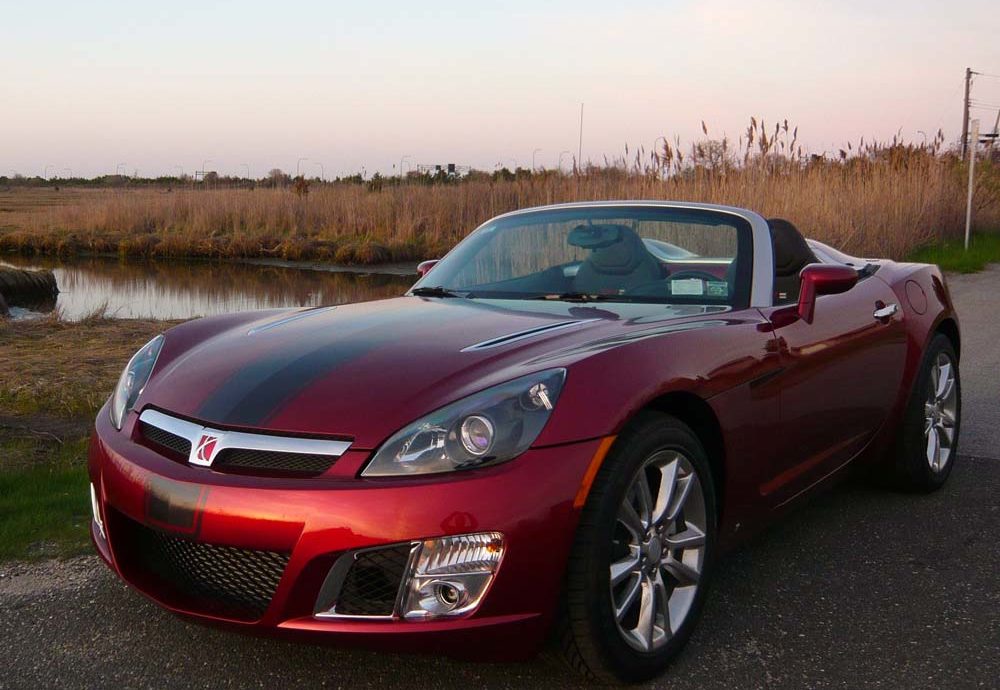
Saturn seemed to play second fiddle to Pontiac a lot. They almost competed with each other, both wanting to be that youthful and sporty brand that younger people could afford. GM recognized this and, a year after the Solstice was released with a fair amount of success, gave Saturn the keys to the Kappa platform and they came up with the Sky. Essentially identical to the Solstice, but this time, where they probably could have gotten away with a mere badge engineering job, they gave it a completely new body. And what a body it was. They somehow managed to retain the Saturn design language while making it great to look at. An attractive Saturn makes about as much sense as a jumbo shrimp. Where the Solstice was round with soft edges and almost had a cutesy vibe to it, the Sky was cut with sharp lines and corners, an angrier face, the design holds up well today amongst all the other pissed off looking sports cars.
The interior has not aged quite as gracefully. When the Sky and Solstice came out their interiors looked like some sort of bastardized hybrid between the interiors of their economy cars and the interior of the C6 Corvette… which is actually kind of appropriate seeing as the whole car was basically an attempt at rebuilding a Corvette from the ground up using only economy car parts. This was pre-bankruptcy General Motors, interior design and build quality wasn’t exactly something they were known for at the time and they weren’t about to rewrite their own rulebook on the matter for their new budget sports cars. The Corvette at the time was often judged, in my opinion, sometimes a bit too harshly, but the criticisms not entirely unjustified, for its cheap feeling interior. Critics made sure to bring this up as an issue with the Sky as well when comparing it to cars like the 370Z and Mazda RX-8. Some will argue that the interior of a sports car should be considered a secondary matter, one to be looked at after exterior styling and performance have been sorted out.
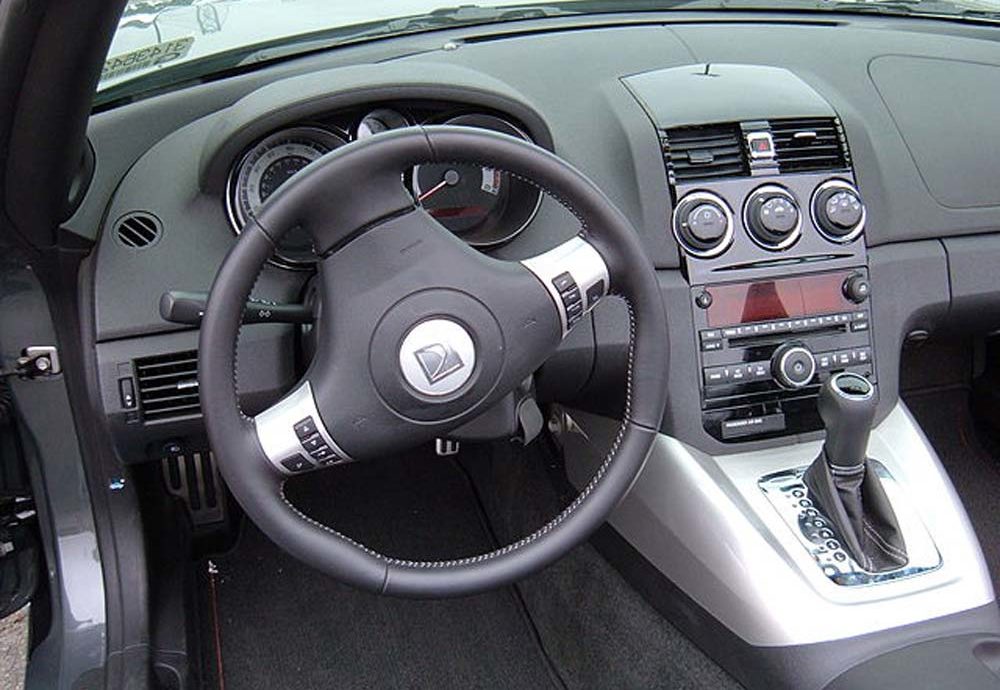
The Sky came standard with a naturally aspirated 2.4L I4 making 177 horsepower with either a 5-speed manual or 5-speed automatic gearbox, and it was… OK? I guess? Sub 7 second 0-60 times, high 15s for a quarter mile, it was often compared the MX-5 Miata which made similar numbers. The biggest difference between the Kappa and Miata was the mass, the Sky was several inches wider and longer than the Mazda and as a result was some 500 pounds heavier. The general consensus looking back on reviews from the late 2000s seemed to be that while it wasn’t as good as a Miata in terms of handling and steering, it was probably a close second, in that price range. It seemed to fall somewhere in between “exactly what I expected” and “slightly better than I expected,” which is about as close to a compliment as you can get from GM’s point of view. For the most part, the Sky was just a fairly light weight, inexpensive, rear wheel drive roadster that had passable performance figures for the price – which was low to mid $20K, for the record.
Things got interesting with the Red Line. Just as the supercharged Ion Red Line and Vue Red Line were disappearing and all hope seemed lost, the Sky launched with a Red Line trim to match the Solstice’s equivalent GXP level. The 2.0L turbo found under the hood made a respectable 260 horsepower, bigger rims, dual exhaust and a stiffer suspension showed up to tell the world that this Sky meant a bit more business. To borrow numbers recorded by Car & Driver back in December 2006, they saw the Red Line hit 60 in 5.2 seconds, the ¼ mile in 14 seconds flat, felt 0.87Gs on their skidpad, the brakes pulled it to a stop from 70mph in 168ft, with the top speed being a drag limited 141mph. For reference, the 200-pound lighter Honda S2000, as recorded by Car and Driver in 2003, saw the following: 0-60mph in 5.4 seconds, ¼ mile in 14.1 seconds, 70 to 0 in 166 feet, and top speed was 149mph. With the Sky’s newfound power it was quickly shoved into comparisons alongside the S2K, and it was the same story we heard with the Miata, slightly quicker in a straight line but because of the heft and larger dimensions of the Saturn it, along with the Solstice, often slotted closer to the bottom end of the ratings. Does that make them worse cars? Well, I don’t think you would be wrong for choosing the Honda, or a Mazda RX-8 for that matter, as most of the comparisons still praised the turbocharged Kappas for having impressive performance to dollar ratios. Despite not handling as well as an S2k they didn’t handle poorly by any stretch of the imagination. The interior, again a point many consider moot in a topless sports car for reasons I do not necessarily agree with, really seemed to be the only point listed as a con.
Resurrecting the idea from the Ion Red Line, Saturn offered a sort of dealer installed 2 Stage upgrade package. All said and done the kit was under a grand and netted you a 30 horsepower and massive ft-lbs of torque over the normal Red Line, for totals of 290 and 340, respectively. It was 50 State emissions legal and as far as I can see did not hurt the warranty. On a sub-30k sports car that weighs 3,000 pounds those are massive gains, I honestly feel bad for anyone who bought a Sky Red Line (or Solstice GXP) and didn’t install this Stage II kit because they probably just didn’t know about. The price of the upgrade is negligible considering what you get, I can’t think of any reason to not have the upgrade, I’m sure you could of worked out a deal with your dealership to include it in your car payments or something if you were strapped that tightly. But all this considered, I still have one question for GM: What is wrong with you?! It’s 50 State legal and doesn’t void warranty so you obviously have faith that you can stand behind the car as being reliable and safe with the mods installed, why did you not offer it as an option from the factory!?
Make it a special performance option, if it was factory stock I’m sure you could have even charged a few grand extra for it and people wouldn’t of complained. That horsepower and especially that torque number would have blown all it’s competition out of the water in ~2008, at least when it came to straight-line stuff. You’d be moving up to a 350Z before you’d get the same horsepower and even then the Stage II Sky Red Line should still be quicker because of the weight advantage. That upgrade would bring the Sky up to the Boxter’s level in terms of power, which was pretty much the peak for lightweight RWD ragtops for most people. I’m not saying the power bump alone would propel the Sky Red Line to the top of comparison reviews with Honda S2000’s, Nissan Z cars, and Porsche Boxters, but the extra oomph would make it more notable in the automotive history books and reviewers might of given the Kappa a few more points for the improvements to acceleration, and one point here and another point there can really make a difference at the end of the day when you go to add them up.
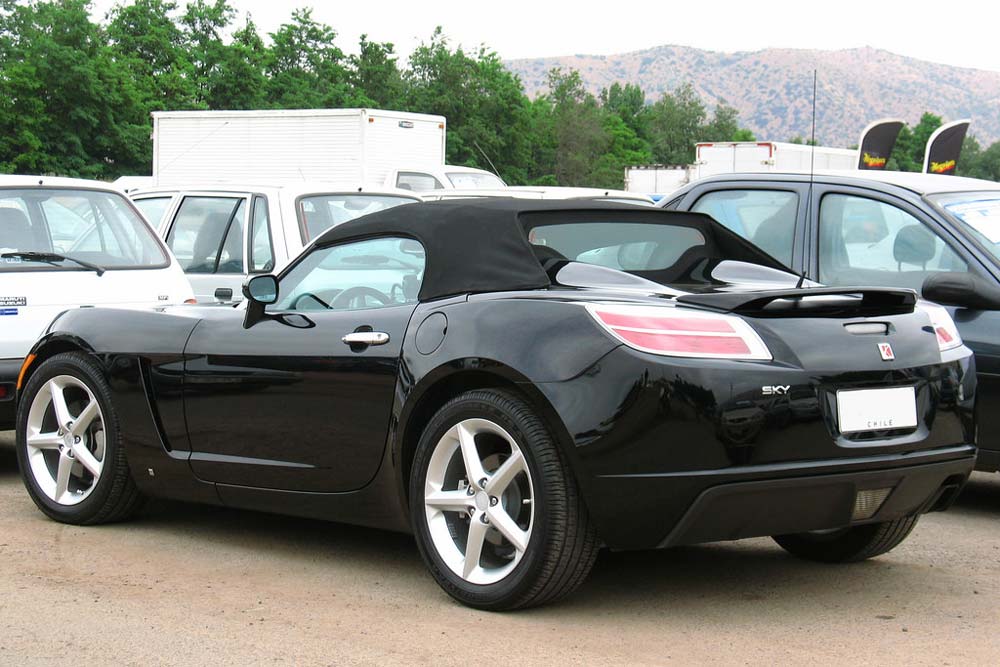
Unfortunately, while there are plenty of forum posts, there isn’t much in the way of “official” numbers from credible sources in terms of what that extra power actually did for the car. With a Stage II kit, even though it could have been installed right at the dealership before you even saw it and apparently retains factory spec reliability as well as meeting emissions requirements, it’s still considered modified and is no longer stock. It’s not a trim or option you could check off on the build sheet, it’s a modification done to the car after it was sent from the factory. Magazines aren’t going to want to put a modified car in a comparison with stock cars, internet armchair racers yell about there being a different set of rules when throwing modified cars into an argument, and you can’t advertise those 290 horsepowers in brochures or commercials. All they needed to do was make it a factory option, heck, even just throw the kit on some special edition Sky and only build 500 of them or something, that would be enough of an excuse for a big publication to justify stacking it up against other stock cars. I’m sure there’s something I’m missing here because the whole situation just doesn’t make sense, if this kit is as great as the internet seemed to think it was 8 years ago, GM really shot themselves in the foot by making it a dealer installed modification.
So, why did the Sky fail? Despite looking like a baby Corvette and otherwise being identical to the Solstice, the Saturn only sold about 1 car for every 2 that Pontiac put out. I’m thinking part of the reason is because of the number of dealers; remember back in the ‘90s when GM sort of wanted Saturn to go off and do its own thing? Saturn had their own dealers and while they were eventually absorbed into other GM dealerships, there were still more dealers selling Pontiacs than there were dealers selling Saturns. Another reason could have been brand recognition or just the general population’s opinion of the Saturn brand. Saturn was cheap, ugly, weird, and damn proud of it, which is fine when you’re trying to push $14,000 quirky looking economy cars on people, but when you go to buy a sports car do you really want to buy it from the brand who is best known for making ugly and cheap economy cars? Pontiac has a legendary history with its muscle cars and they really developed into making sporty and aggressive looking family sedans, surely they would be better at building a sports car? Hindsight is 20/20, but I feel like if Saturn gave the Sky a sort of brand-within-a-brand, it might have been received better by the crowd who places a car’s value on the badge it’s wearing. Like how Chevy doesn’t put a Bowtie on the Corvette or how Hyundai just started calling all of their good cars Genesis’. Lack of options didn’t do the Sky any favors either, the Solstice got a hardtop-coupe-targa-top-hatchback thing towards the end of its life, and even though they are quite rare, around 1,300 produced, the Sky still only had the one ragtop body style. Now, a convertible named “Sky” is clever and making it a coupe does seem a bit silly, but I am personally firmly in the camp that believes a coupe is far more visually appealing than a ragtop and the Solstice coupe is so fine if it were a wine you would need to ask the waiter how much it costs because it doesn’t actually say on the menu. With the Sky’s arguably superior styling, it’s a real shame we never got to see a coupe version, if the Solstice is any indication it probably wouldn’t of helped sales much but it sure would be pretty to look at.
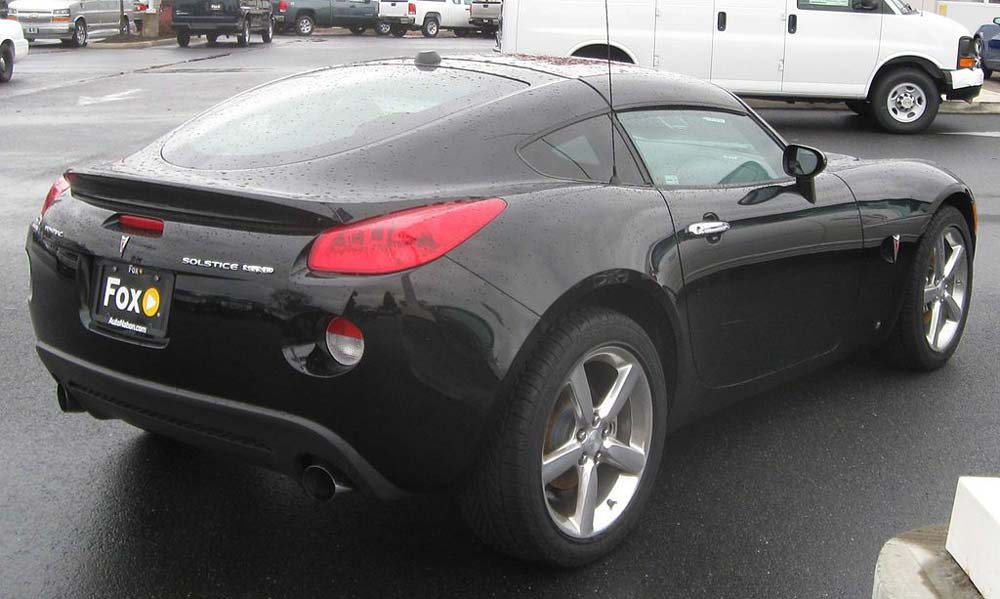
The Sky failed because of a series of poor decisions by GM. It failed because it wore a Saturn badge rather than a Chevrolet badge. The Sky failed because MotorTrend and Car & Driver said “Yeah, the Sky is great, it’s just that the S2000 and Miata are better,” and why would you not want to buy the best? The Sky failed because America failed. When the recession happened nobody really felt like spending money on sports cars. Buying things from GM didn’t make much sense when they were teetering on the edge of bankruptcy and everyone around you was complaining about reliability and build quality and resale value. Saturn and Pontiac, for that matter, did not survive the bankruptcy. You see people complain about the death of Pontiac all the time and how the Trans AM and GTO should come back. it’s probably the most frequently brought up name when a few car nerds get together and talk about which brand they would want to resurrect. When was the last time you talked about Saturn? When was the last time you even heard about Saturn? Saturn is like Barb from Stranger Things, they died and everyone just kind of shrugged and kept looking for Will Beyers/Pontiac. The Sky is one of those cars that even car guys will do a double take at because they don’t immediately recognize it. Just last summer my father texted me a picture of one asking me if I’ve ever heard of it and was a little shocked to find out it was made by Saturn.
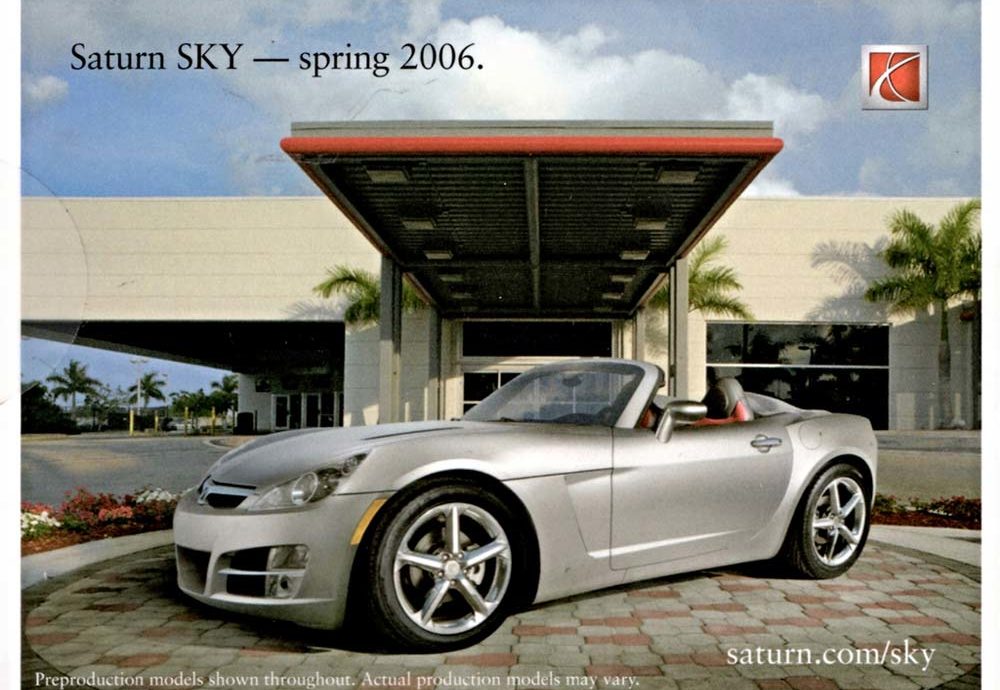
Really, it’s almost sad. We saw a new brand, a new face, the first new American brand in… decades? They showed up young and eager, ready to take on the world. We watched the rise of Saturn, then we watched as they fell, turning into another name full of badge engineered, plastic, fantastic, heaps that nobody wanted. Was the Sky a last stand to prove themselves? Was it their last huzzah, knowing the end was nigh and wanting to go out with a bang? Next time you and your buddies are moping around and mourning the loss of Pontiac or Plymouth or AMC, take a minute and consider poor ol’ Saturn. They were ugly, they were cheap, but they tried their best, did their job well. While they were at it, ended up making one of the coolest inexpensive American sports cars to come out of the 2000s, and for that, I think they deserve at least a little recognition.

